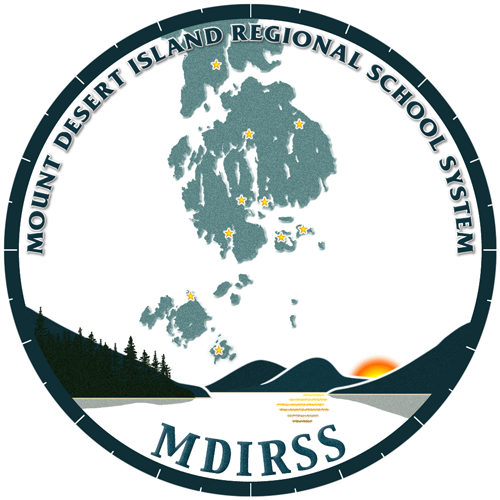Grading & Reporting
MDIRSS Philosophy of Assessment, Grading & Reporting
All assessment, grading, and reporting practices will support the learning process, focus on accomplishment, guide the next steps for teaching and learning, and encourage student success in a proficiency-based system.
Purposes of Communicating Students’ Level of Achievement
Communicate achievement status to students, parents, community, post-secondary institutions, and prospective employers
Provide information that students can use for self-evaluation and goal setting
Identify students for available educational support and opportunities
The Advantages of Standards-Based Grading
Standards-based grading evaluates student performance on objective criteria (a.k.a standards) as identified by law through the Maine Learning Results (MLR) and clearly communicates achievement
Students’ grades represent what students know, understand, and are able to do. This informs the MTSS process.
Habits of Work (Respect, Responsibility & Perseverance) are reported separately from the course grade, making students' knowledge and skills more transparent.
Scoring
Teachers will use rubrics, assessment checklists, and other types of scoring guides to provide feedback and assess students using the following scale:
Teachers will use both formative and summative assessment practice
*A formative assessment is an assessment for learning. It is used to check student's understanding and to plan subsequent instruction. Formative assessments are identified as Prep and Practice (see below).
*A summative assessment is an assessment of learning. It is used to provide teachers and students with information about the attainment of knowledge. Summative assessments are identified as a Body of Evidence (see below).
Prep and Practice
Prep and Practice assignments give students the opportunity to get feedback without penalty. Scores on Prep and Practice assignments do not count toward the final grade of a standard. Instead, scores are intended to communicate progress and show readiness for success on a Body of Evidence assignment.
Body of Evidence
Students are required to demonstrate proficiency in the standards through their work. A Body of Evidence assignment will count towards the final grade on that standard (or standards). All of the evidence scored for each standard will be calculated using a "decaying average." This means the last submission weighs more heavily (75 %) to represent student growth over time.
Homework
There are three purposes for homework in a proficiency-based system:
Preview - To prepare students to learn new material
Practice – To help students master learning outcomes
Evidence – To provide evidence of a student’s progress toward a learning outcome
Not all homework is assessed but all homework is important. If teachers assess homework, they will use rubrics, assessment checklists, and other types of scoring guides in order to give feedback toward a learning outcome or to contribute to a student's Body of Evidence.
Multiple Opportunities and Professional Judgment
Students will have multiple opportunities to demonstrate proficiency in standards. As such, deadlines are appropriate and a teacher can assign a score on a student assignment and move on.
If a student has been fully participating in the teaching and learning cycle and needs more time to achieve mastery, students will be given another opportunity to try again at the teacher’s discretion after the student has shown additional preparation and/or practice. This may be a redo of an old assignment OR another attempt in the next assignment.
Report Cards and Mid-Term Reports
Report cards are provided at the end of each semester. If more frequent feedback is required because of individual circumstances, arrangements can be made through the classroom teacher or Guidance Office. If parents have concerns about a child’s progress in class, they are encouraged to contact the teacher directly.
